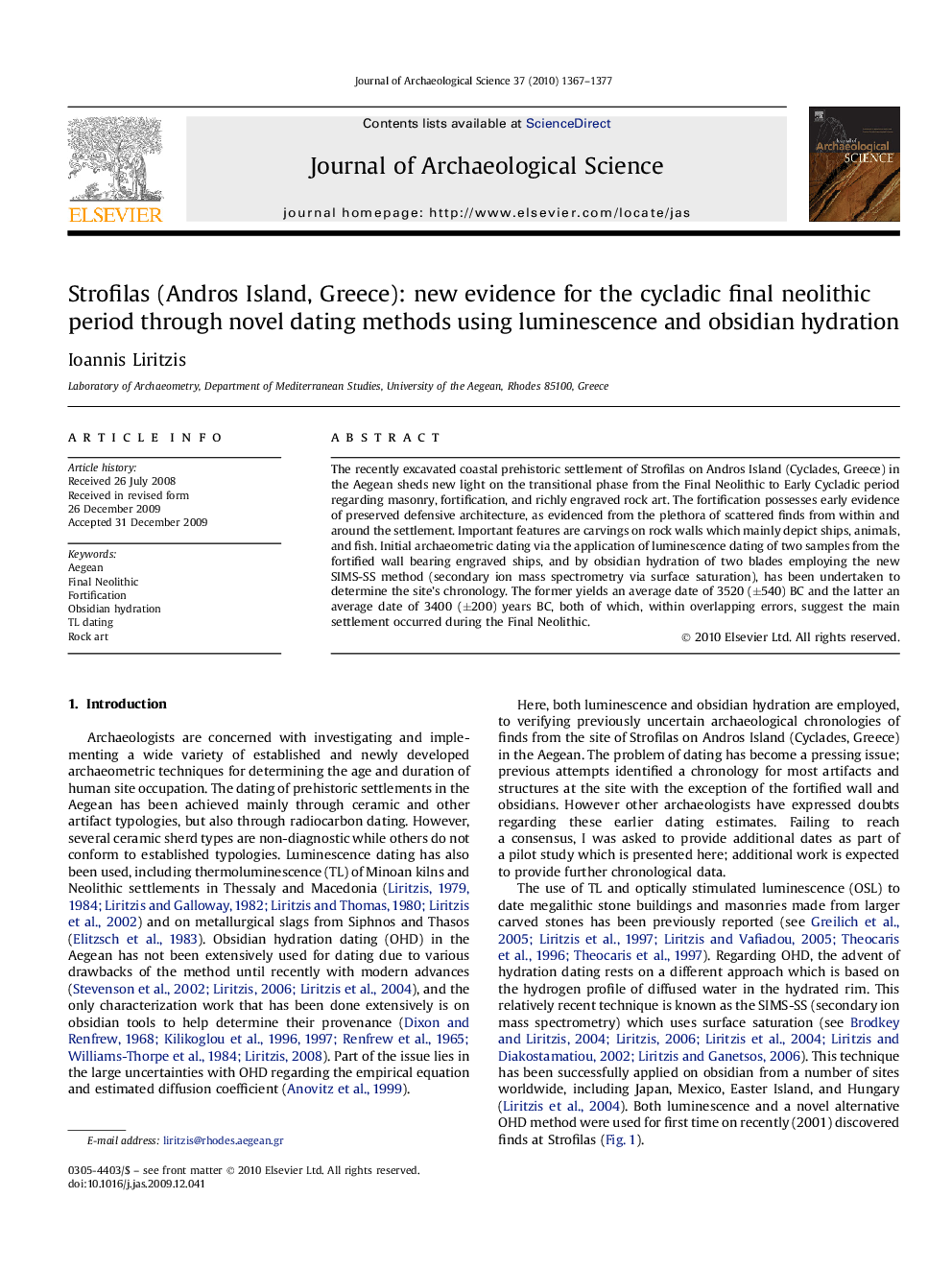| Article ID | Journal | Published Year | Pages | File Type |
|---|---|---|---|---|
| 1036762 | Journal of Archaeological Science | 2010 | 11 Pages |
The recently excavated coastal prehistoric settlement of Strofilas on Andros Island (Cyclades, Greece) in the Aegean sheds new light on the transitional phase from the Final Neolithic to Early Cycladic period regarding masonry, fortification, and richly engraved rock art. The fortification possesses early evidence of preserved defensive architecture, as evidenced from the plethora of scattered finds from within and around the settlement. Important features are carvings on rock walls which mainly depict ships, animals, and fish. Initial archaeometric dating via the application of luminescence dating of two samples from the fortified wall bearing engraved ships, and by obsidian hydration of two blades employing the new SIMS-SS method (secondary ion mass spectrometry via surface saturation), has been undertaken to determine the site's chronology. The former yields an average date of 3520 (±540) BC and the latter an average date of 3400 (±200) years BC, both of which, within overlapping errors, suggest the main settlement occurred during the Final Neolithic.
